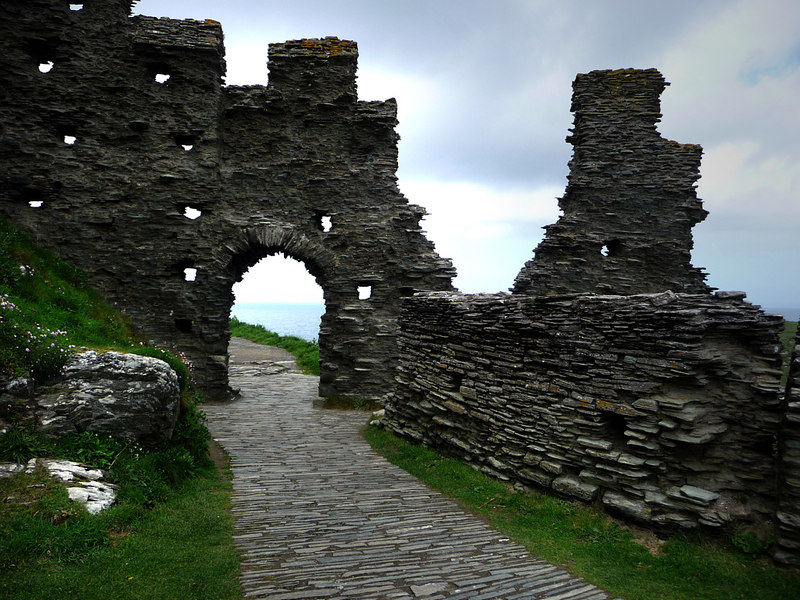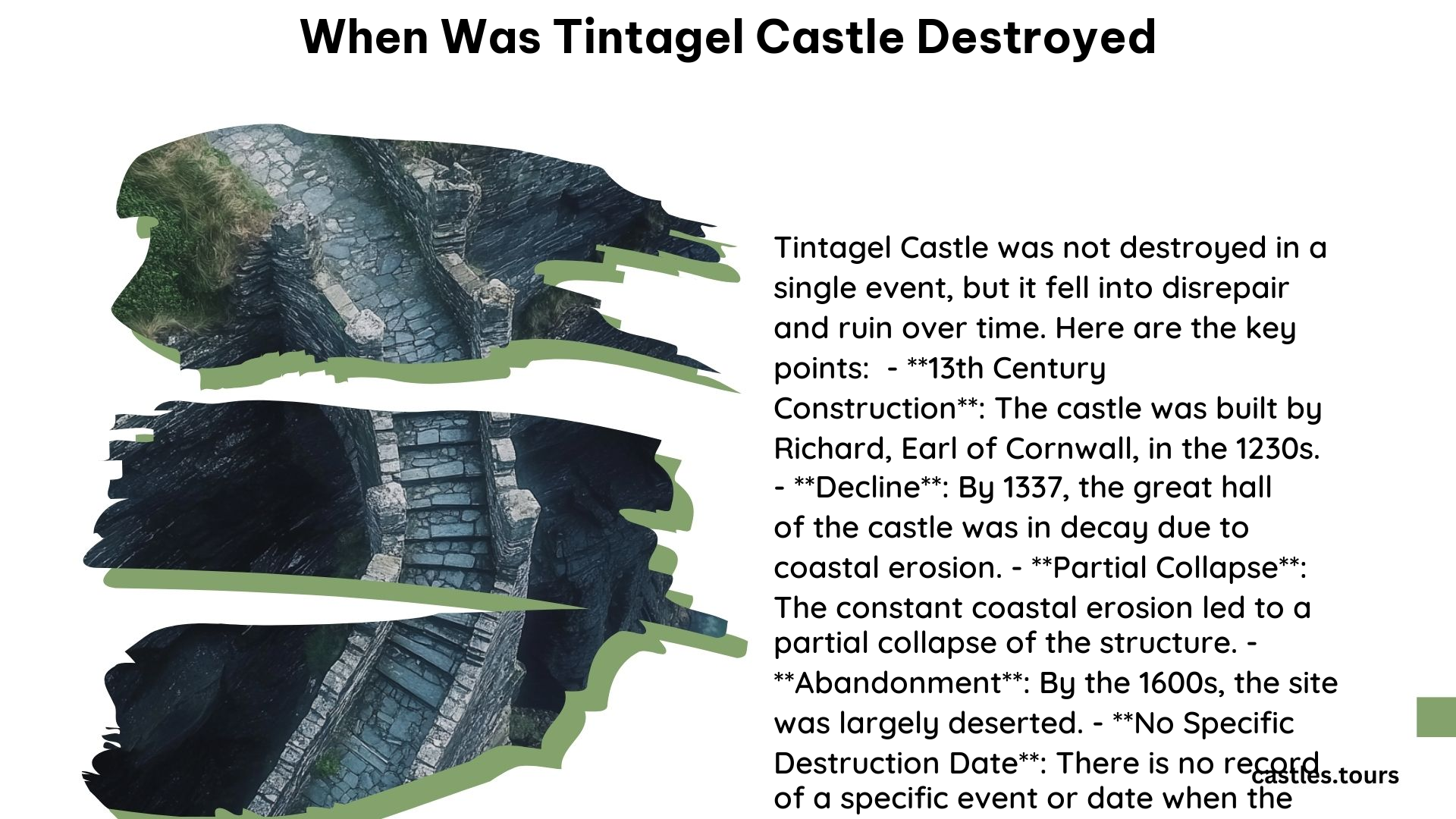Tintagel Castle, a legendary fortress situated on the rugged Cornish coast of England, has a rich and complex history that spans centuries. While the castle was not destroyed in a single catastrophic event, it has faced a gradual decline over time, with various factors contributing to its eventual ruination. In this blog post, we’ll explore the key events and timeline surrounding the destruction of Tintagel Castle.
When Was Tintagel Castle Built?

 , licensed under CC BY-SA 2.0
, licensed under CC BY-SA 2.0Tintagel Castle was constructed in the 13th century by Richard, 1st Earl of Cornwall. The castle was built on the site of an earlier settlement, which had been occupied since the 5th or 6th century AD. The castle’s strategic location on a rocky headland made it an impressive and formidable structure, commanding stunning views of the surrounding coastline.
The Gradual Decline of Tintagel Castle

14th Century: The Great Hall in Decay
By the 14th century, the castle’s great hall was already in a state of decay due to the relentless coastal erosion that has plagued the site for centuries. The castle’s exposed location on the cliffs made it particularly vulnerable to the elements, and the gradual deterioration of its structures was an ongoing challenge.
17th Century: Tintagel Castle Largely Deserted
As the centuries passed, Tintagel Castle continued to fall into disrepair, and by the 17th century, it was largely deserted. The specific date of its complete abandonment is not known, but it is clear that the castle had become a shadow of its former self by this time.
The Destruction of Tintagel Castle in 1719
The most significant event in the destruction of Tintagel Castle occurred in 1719, during a Jacobite rebellion. At this time, the castle was garrisoned by Spanish troops who had been sent to support the Jacobite cause. However, the English forces were not willing to tolerate this foreign presence on their soil, and they launched an attack on the castle, effectively destroying it.
Ongoing Threats to Tintagel Castle
Even after the 1719 incident, Tintagel Castle has continued to face threats to its preservation. The castle’s precarious position on the cliffs has made it vulnerable to the relentless forces of coastal erosion, which have gradually worn away the structures over time.
In 2022, English Heritage, the organization responsible for the castle’s management, identified Tintagel as one of six sites at risk of destruction due to this ongoing erosion. The castle’s fragile state and the continued threat of environmental factors have made its long-term preservation a significant challenge.
Preserving the Legacy of Tintagel Castle
Despite the gradual destruction of Tintagel Castle over the centuries, the site remains an iconic and beloved landmark in Cornwall. Its rich history, mythological associations, and stunning natural setting have made it a popular destination for visitors from around the world.
Efforts to preserve and protect Tintagel Castle are ongoing, with organizations like English Heritage working to stabilize the remaining structures and mitigate the effects of coastal erosion. While the castle may never be fully restored to its former glory, the ongoing work to safeguard its legacy ensures that this remarkable piece of history will continue to captivate and inspire generations to come.
